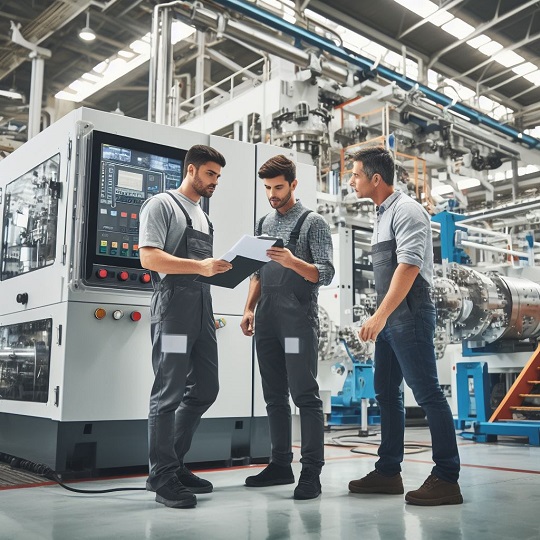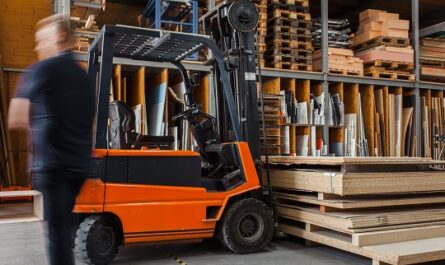When an organization has lots of audit issues but not much money to fix them, it’s tough.
But by planning smartly and being resourceful, they can still deal with these problems well, even with limited funds.
With careful thinking and using what they have wisely, they can tackle the audit findings without breaking the bank.
Before we go further into this topic, don’t forget to follow my LinkedIn account. You’ll get more helpful insights on supply chain management there.
Table of Contents
Identify Priorities
When an organization faces budget limits, it’s crucial to prioritize which audit findings need attention first.
By looking at how serious each issue is and how much it could harm the organization’s compliance, operations, or reputation, they can decide where to focus their efforts.
They should give top priority to critical problems that could break compliance rules, disrupt important work, or hurt the organization’s reputation.
This smart approach ensures that they use their limited resources where they’ll make the biggest difference, keeping the organization safe from immediate risks.
Dealing with urgent issues first helps the organization handle immediate threats and avoid potential problems down the line.
By concentrating on fixing the most pressing findings, they strengthen their ability to handle challenges and protect crucial parts of their work.
Whether it’s making sure they follow regulations, fixing weak spots in operations, or avoiding damage to their reputation, tackling critical issues early lets them stay strong and true to their values.
What’s more, prioritizing helps the organization make the most of what they have.
By putting their resources into fixing the most important findings, they can get the best results with what they’ve got.
This focused approach means they use their limited budget wisely, making a big impact even when money is tight.
In the end, by choosing what to fix based on how serious it is and how much it could harm them, organizations can handle immediate risks well and set themselves up for long-term success.
Utilize Internal Resources
Making the most of internal resources is a smart move for organizations dealing with tight budgets and lots of audit issues.
Skilled employees, experts in specific subjects, and the tools they already have are super valuable assets.
By using their know-how and experience, organizations can find smart, low-cost ways to fix problems and improve processes without spending a ton of money.
These folks know the ins and outs of how the organization works, so they’re great at finding practical solutions to audit findings.

Getting skilled employees and experts involved lets organizations tap into a treasure trove of knowledge and experience. They really understand how things work and can figure out what’s causing the audit issues. By getting them in on the action, organizations can come up with solutions that fit their unique needs.
Plus, when employees get to help solve problems, it boosts teamwork and keeps the organization improving over time.
Using the tools and tech they already have is another savvy move.
Instead of shelling out for new stuff, organizations can make their existing tools work even better.
Whether it’s using automation to speed things up, analyzing data to find trends, or using communication tools to work better together, the tech they already have can help them tackle audit findings without breaking the bank.
By making the most of what they’ve got, organizations can make big changes and hit their compliance goals without spending a fortune.
Implement Incremental Changes
Taking things one step at a time when dealing with audit findings is a smart move for organizations on a tight budget.
Instead of trying to fix everything all at once, they break big tasks into smaller ones.
This helps them make progress steadily without running out of resources.
By focusing on achievable goals within their limits, organizations can tackle audit findings effectively without getting overwhelmed.
Breaking down big tasks into smaller ones lets organizations prioritize what’s most important and doable.
This means they can use their resources wisely, concentrating on urgent stuff while putting less critical tasks on hold.
By doing this, organizations can make real progress without feeling swamped by all the work.
Plus, breaking things into smaller pieces makes it easier to keep track of how they’re doing and adjust their plans if things get tricky.
Making changes bit by bit over time also helps organizations keep getting better.
By showing they’re committed to fixing audit findings gradually, they prove to everyone that they take compliance seriously.
This encourages employees to get involved and share their ideas for improvement.
Eventually, all these small changes add up, making the organization stronger and more effective, even with limited resources.
You might also like:
- Pursuing Zero Waste in the Supply Chain: Challenges and Strategies
- A Step-by-Step Guide to Analyzing Stocktaking Discrepancies
Seek Alternative Funding Sources
Looking for different ways to get funding is a smart move for organizations dealing with tight budgets and lots of audit issues.
By looking beyond their own pockets, they can find extra resources to help them fix problems.
Things like grants, subsidies, and teaming up with other organizations can give them the money and support they need to tackle audit findings effectively.
By teaming up with industry groups, government agencies, or non-profits, they can tap into extra help and know-how that they might not have on their own.

Partnering up with other organizations can bring lots of benefits besides just money.
Working with industry groups lets organizations learn from others in their field and get tips on what works best.
Government agencies might have special programs to help with compliance or offer advice on dealing with audit findings.
Non-profits often focus on making organizations better and can offer resources, training, or advice.
By working together with these outside groups, organizations can make sure they’ve got everything they need to handle audit findings well.
What’s more, looking for different ways to get money and support can bring out creativity and resourcefulness in the organization.
By thinking outside the box and teaming up with others, they show they’re ready to tackle challenges head-on.
Exploring all the different options takes careful planning and teamwork, but it helps build a culture where everyone’s ready to adapt and find solutions.
And when they succeed in getting outside help, it shows they’re proactive and ready to take on whatever comes their way.
Prioritize Training and Awareness
Investing in training and awareness programs is a smart move for organizations trying to handle audit findings without spending too much.
By giving employees the right skills and knowledge, organizations help them spot, understand, and deal with audit issues quickly and effectively.
Training covers things like following rules, best ways to work, and solving problems, making sure employees have what they need to help with compliance efforts.
Plus, by making sure everyone knows how important following rules and improving are, organizations build a culture where everyone’s involved in making things better.
Having a culture where following rules and always getting better are key helps organizations stay safe and perform well.
When employees get why rules matter and see how they help, they’re more likely to stick to them.
And when everyone’s always looking for ways to do things better, organizations can stay ahead of problems and keep up with changes in the rules.
By getting everyone on board with this way of thinking, organizations set themselves up to handle whatever comes their way and keep improving over time.
Investing in training and awareness programs might seem like it costs a lot, but it’s worth it in the long run.
Having well-trained employees who know what they’re doing saves organizations from having to pay for outside help or deal with fines or a bad reputation.
Plus, when employees feel like they’re part of something important and see how their work makes a difference, they’re happier and work better.
So even though it might cost a bit upfront, investing in training and awareness pays off big time in the end.
Optimize Existing Processes
Reviewing how things are done already is a good way for organizations to handle audit findings without spending more money.
By looking closely at how work gets done, organizations can find places where they can make things better, faster, and easier.
This means spotting things like extra steps, places where things get stuck, or ways things could be done more efficiently.
By cutting out stuff that’s not needed, combining tasks, and making workflows smoother, organizations can get a lot more done without needing extra cash.
Making workflows simpler and cutting out extra steps helps organizations use their time and resources better.
By making things easier, they free up time and resources that can be used for more important stuff.
This might mean reorganizing how things are done, making sure everyone knows what they’re supposed to do, and making sure everything works the same way across different parts of the organization.
Plus, by getting rid of stuff that’s not needed anymore, organizations can avoid wasting time and making mistakes, making everything work better in the end.
Using tools that can do things automatically is another good way for organizations to use their resources better and get more done without spending extra money.
These tools can do things like fill out forms, do reports, or check if everything’s following the rules.
By letting these tools do stuff that people used to have to do, organizations can free up people to work on things that need more thought and creativity.
Plus, using these tools means fewer mistakes and everything getting done the same way every time, making everything run smoother and better.
Overall, by looking at how things are done already and using tools that can do stuff automatically, organizations can make big improvements in how much they get done and how well they use their resources to handle audit findings.
You might also like:
- Achieving Inventory Accuracy: Myth or Reality?
- 12 Essential Criteria for Choosing the Right Material Supplier
Communicate Effectively
Keeping everyone in the loop is super important for handling audit findings and meeting compliance goals.
This means talking openly and honestly with everyone involved, like auditors, bosses, and all the workers.
By letting everyone know how things are going with fixing issues, organizations build trust and make sure everyone’s on the same page.
Regular updates about what’s been done, what problems are popping up, and what goals have been reached keep everyone in the know and involved.
Auditors are really important in this process because they give helpful advice on how to get better.
By talking openly with auditors, organizations show they’re serious about fixing problems and making things right.
Having ongoing conversations with auditors helps organizations learn from their expertise and make sure they’re doing what they need to do.
Plus, being honest and open with auditors builds trust and makes the whole audit process work better.

Talking to bosses and workers is just as important for making sure everyone’s working together to meet compliance goals.
By keeping everyone updated on how things are going and why following the rules is important, organizations get everyone on board.
Making sure everyone knows they’re a part of the solution and their work matters builds a sense of responsibility and gets everyone working toward success.
Overall, talking openly and honestly with everyone involved keeps things running smoothly, helps everyone work together, and makes it more likely that organizations will fix audit findings and meet compliance goals.
Conclusion
When organizations don’t have a lot of money for making things better, it can be tough.
But by being smart and resourceful, they can still tackle problems effectively.
This means first looking at which issues are most serious and need fixing right away.
Then, they can use what they already have inside, like their people and tools, to start making small changes over time.
Finding different ways to get money, like grants or partnerships, can also help.
By focusing on training, improving how things are done, and keeping everyone talking, organizations can make steady progress toward fixing problems and being really good at what they do, even with limited funds.
I hope you find it helpful!
Please share this article with your colleagues so they can also benefit. For more insights on supply chain management, follow my LinkedIn account. You’re free to use all articles on this blog for any purpose, even for commercial use, without needing to give credit.

 by
by 


